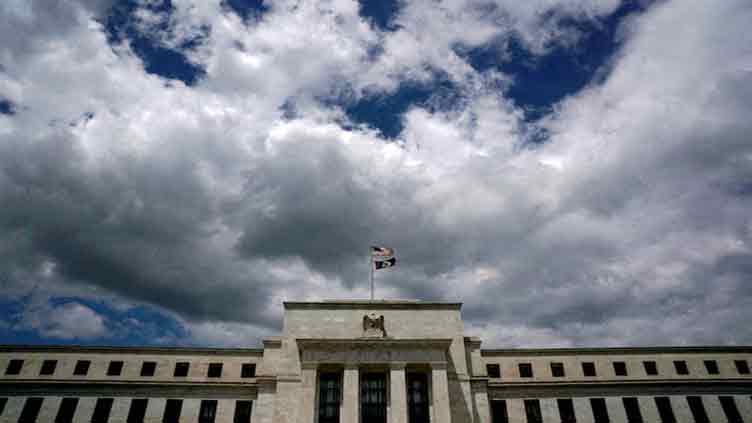Some Fed officials at last meeting favoured US rate hikes if inflation remains sticky

Business
Disinflation would likely take longer than previously thought
WASHINGTON (Reuters) – Federal Reserve officials at their last policy meeting said they still had faith that price pressures would ease at least slowly in coming months, but doubts emerged about whether the current level of US interest rates was high enough to guarantee that outcome and "various" officials said they'd be willing to hike borrowing costs again if US inflation surged.
That meeting was held before data showed the pace of consumer price increases beginning to cool again in April, yet reflected what US central bank officials since then have said is increased uncertainty about the path of inflation and monetary policy.
"Participants ... noted that they continued to expect that inflation would return to 2 per cent over the medium term," according to the minutes of the April 30-May 1 meeting, but "the disinflation would likely take longer than previously thought."
While the policy response for now would "involve maintaining" the Fed's benchmark policy rate in the current 5.25pc-5.50pc range, "various participants mentioned a willingness to tighten policy further should risks to inflation materialize in a way that such an action became appropriate," the minutes said, employing a modifier not included in the usual set of words – like some, many, and most – used in the minutes to give a sense of how many officials voiced a particular opinion.
Read more: Powell dashes US rate cut hopes, says current policy needs more time to work
Fed Chair Jerome Powell and other policymakers have since said they feel further rate hikes are unlikely.
But the minutes released on Wednesday excluded specific reference to that notion and to the likelihood of rate cuts this year.
The March 19-20 meeting minutes said that participants had "judged that the policy rate was likely at its peak for this tightening cycle, and almost all participants judged that it would be appropriate to move policy to a less restrictive stance at some point this year if the economy evolved broadly as they expected."
In place of that broad judgment, the latest minutes showed an emerging debate about just how tight monetary policy is, an important consideration that could bear on how fast inflation returns to the central bank's 2pc target – or whether it gets there at all.
The impact of high US interest rates on the economy has not been as dramatic as some Fed officials expected, a positive development for the job market in particular but one that has left a question mark about inflation.
Read more: Fed official says US interest rates may have to be kept steady all year
"Although monetary policy was seen as restrictive, many participants commented on their uncertainty about the degree of restrictiveness," said the minutes from the last meeting, with officials mentioning that changes in the economy may have simply rendered any given level of the Fed's short-term interest rate less effective in influencing how consumers and businesses spend and invest.
US Treasury yields edged up after the release of the minutes and traders pulled back slightly from bets on Fed rate cuts this year, with rate-futures contracts reflecting only about even odds the central bank will reduce rates more than once this year.
"Higher for longer is the official mantra," said Chris Zaccarelli, chief investment officer at Independent Advisor Alliance, adding that although Fed officials "wanted to cut rates, they are not going to be able to do that in the near future."
EMERGING SIGNS
Fed officials since the last policy meeting have tamped down expectations for imminent rate cuts, which investors now see beginning in September.
But even as Fed officials acknowledged the risk of inflation pressures again building in the economy, they largely viewed the data from the start of the year as a temporary setback in the battle to return inflation to the 2pc target.
The April 30-May 1 meeting was the sixth straight to feature no change in interest rates. Policymakers at this point seem likely to keep the Fed's benchmark rate on hold until September at least, after their confidence in easing price pressures was shaken by higher-than-expected inflation through the first three months of this year.
At his post-meeting press conference on May 1, Powell said it "will take longer than previously expected" for policymakers to become comfortable that inflation will resume the decline towards 2pc that had cheered them through much of last year.
In the weeks since then, however, some signs have emerged that inflation is again easing, demand is softening and the labour market is coming more into balance. Fed officials are watching closely for signs of a possible slowdown in consumption, and warnings from consumer-facing companies point in that direction.
Firms ranging from McDonald's to PepsiCo have flagged in recent weeks the strain that US consumers are under due to sticky food inflation and the rising costs of eating out, renting homes and getting a mortgage.
"We remain cautious in our near-term growth outlook and we expect consumer discretionary trends to remain pressured in the short term," Christina Hennington, chief growth officer for Target said on Wednesday in a media call to discuss the retailer's quarterly results.
Read more: Fed officials urge patience on timing of initial US rate cut
Still, Fed officials have said that gaining "greater confidence that inflation is moving sustainably toward 2 percent" – a standard for pivoting to rate cuts that they have embedded in their policy statements since January – will take more time.
On Tuesday, Fed Governor Christopher Waller put the time frame at "several months."
"In the absence of a significant weakening in the labor market, I need to see several more months of good inflation data before I would be comfortable supporting an easing in the stance of monetary policy," he told the Peterson Institute for International Economics in Washington.


